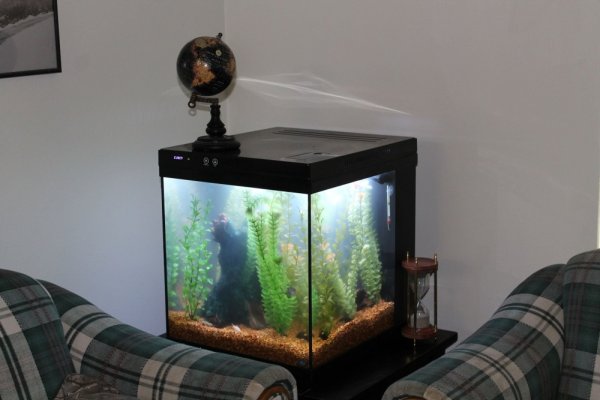jaylach
Aquarium Advice Apprentice
It has been many years since I setup my last tank... like over 25 years.
I'm having a problem that I've never experienced. It involves a 20 gallon cube thank. It came with built in filtration which I have bypassed going with under gravel filtration. What can I say, I'm a bit old school. Plus the filtration pump is just too strong for the rope fish I eventually want. The built in pump move like 200 gallons per hour. Totally off the wall for a 20 gallon tank especially as I want a couple of rope fish and they don't like fast water.
Anyway I can't get the tank clear. The under gravel filter plates cover in the area of 2/3 - 3/4 of the base with a 2-3 inch gravel base, it varies. I suspect that it may be my air flow through the risers but that does not really fit as I gone from fine bubbles to course bubbles but the actual air flow could be a factor.
Right now the tank only contains 2-black skirt tetras, a small pleco and an even smaller cory cat. (I inherited thees critters). With the extremely small population I can't see it being an ammonia or other waste issue. Also the fish seem totally content, active and eat well with no signs of stress. Also there are currently no live plants. The tank is only about 10 days old which could be a factor but, like I said, I've never experienced this before.
My previous tanks were in north east Ohio and Ft Worth Texas which might as well be considered sea level. I am now in Wyoming at an altitude of 3700 feet. I sort of think that could be an issue as what air does in water is different between sea level and 3700 feet. Shoot, even the boiling point is different.
Anyway I'd appreciate any advice that could be offered. The tank actually seems healthy and the current fish are calm and seem happy. At this time I have not done PH or other tests but will soon.
I'm having a problem that I've never experienced. It involves a 20 gallon cube thank. It came with built in filtration which I have bypassed going with under gravel filtration. What can I say, I'm a bit old school. Plus the filtration pump is just too strong for the rope fish I eventually want. The built in pump move like 200 gallons per hour. Totally off the wall for a 20 gallon tank especially as I want a couple of rope fish and they don't like fast water.
Anyway I can't get the tank clear. The under gravel filter plates cover in the area of 2/3 - 3/4 of the base with a 2-3 inch gravel base, it varies. I suspect that it may be my air flow through the risers but that does not really fit as I gone from fine bubbles to course bubbles but the actual air flow could be a factor.
Right now the tank only contains 2-black skirt tetras, a small pleco and an even smaller cory cat. (I inherited thees critters). With the extremely small population I can't see it being an ammonia or other waste issue. Also the fish seem totally content, active and eat well with no signs of stress. Also there are currently no live plants. The tank is only about 10 days old which could be a factor but, like I said, I've never experienced this before.
My previous tanks were in north east Ohio and Ft Worth Texas which might as well be considered sea level. I am now in Wyoming at an altitude of 3700 feet. I sort of think that could be an issue as what air does in water is different between sea level and 3700 feet. Shoot, even the boiling point is different.
Anyway I'd appreciate any advice that could be offered. The tank actually seems healthy and the current fish are calm and seem happy. At this time I have not done PH or other tests but will soon.

